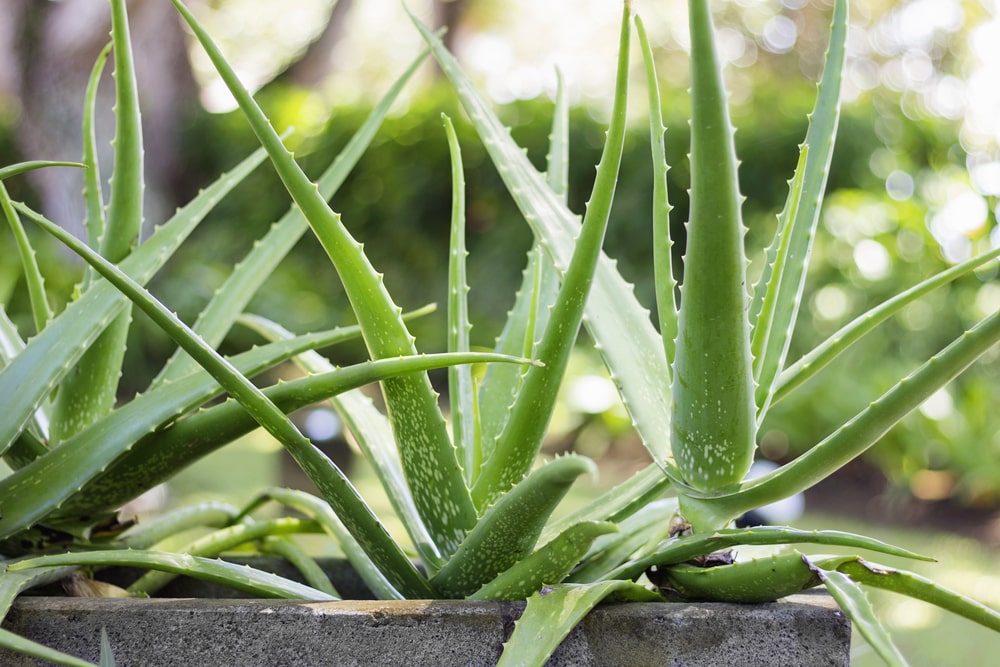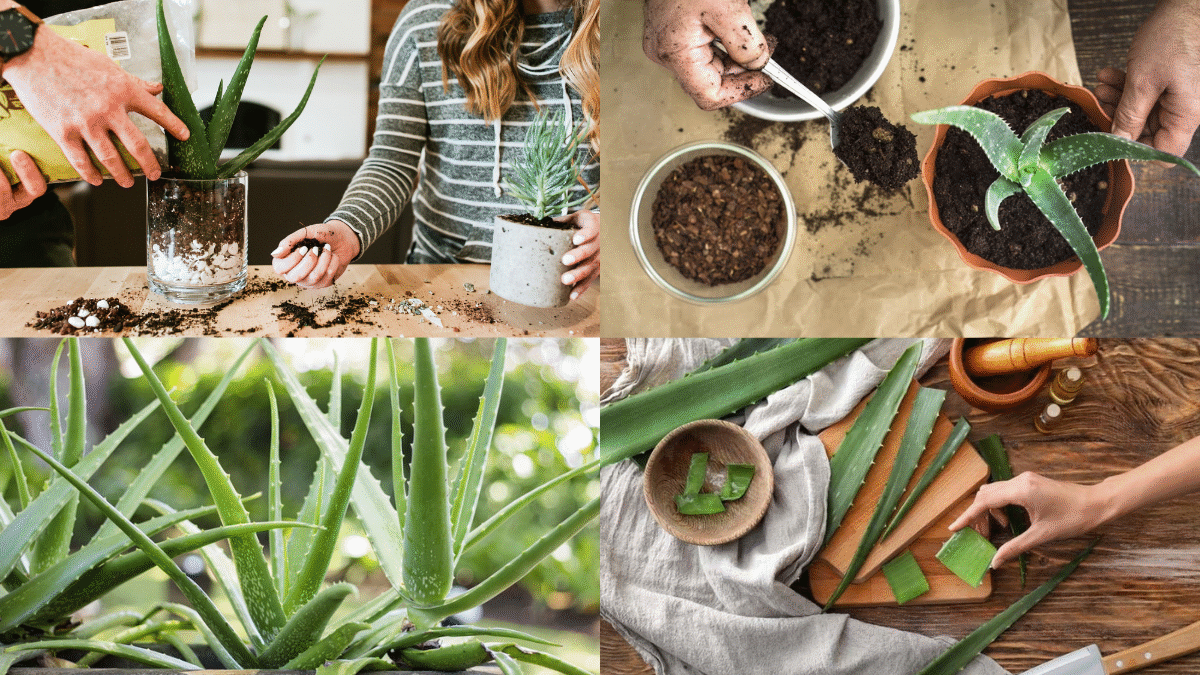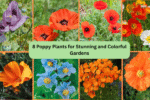Aloe vera has been cherished for centuries for its incredible healing, soothing, and beautifying properties. Not only is it a must-have for any natural skincare routine, but it’s also one of the easiest and most rewarding plants to grow at home. Whether you’re drawn to aloe vera for its medicinal uses or its modern, sculptural appearance, this versatile succulent deserves a spot on your windowsill or patio.
In this complete guide, we’ll cover everything you need to know about how to care for aloe vera plants, from ideal growing conditions to harvesting the precious gel inside. If you’re ready to embrace the beauty and benefits of aloe vera, keep reading!

Why Grow Aloe Vera at Home?
Aloe vera isn’t just a pretty plant — it’s a natural remedy powerhouse. Here’s why adding it to your home makes sense:
- Heals minor cuts and burns
- Soothes sunburn and skin irritation
- Moisturizes and brightens skin
- Improves air quality
- Easy to grow and propagate
- Low maintenance
Plus, its thick, spiky, green leaves with serrated edges give any space a fresh, modern look.
Choosing the Right Aloe Vera Plant
When selecting an aloe vera plant:
- Look for healthy, firm leaves with a vibrant green color.
- Avoid plants with yellowing, mushy, or shriveled leaves.
- If buying from a nursery, pick one in a well-draining pot with minimal soggy soil.
Fun Fact:
There are over 500 species of aloe, but Aloe barbadensis miller is the one known for its medicinal and cosmetic benefits.
Ideal Growing Conditions for Aloe Vera
Light Requirements
Aloe vera loves bright, indirect sunlight.
Best spots:
- A sunny windowsill (south or west-facing)
- A well-lit patio or balcony
Warning:
Too much direct sun, especially in very hot climates, can cause the leaves to turn brown or develop sunburn spots. If outdoors, provide filtered sunlight or partial shade in peak afternoon hours.
Temperature & Humidity
Aloe vera thrives in warm, dry conditions similar to its native African habitat.
- Ideal temperature: 60°F to 85°F (15°C to 29°C)
- Humidity: Low to moderate
It’s not frost-tolerant, so if you live in a colder climate, move your aloe indoors during the fall and winter months.
Soil and Pot Requirements
Aloe vera prefers well-draining, sandy soil to avoid root rot.
Ideal soil mix:
- Cactus or succulent potting mix
- Or a homemade blend of regular potting soil with sand, pumice, or perlite (about 2:1 ratio)
Best pot:
A terracotta or unglazed clay pot with a drainage hole, as it allows the soil to dry out faster.

Watering Aloe Vera: Less Is More
Overwatering is the #1 cause of aloe vera problems. These succulents store water in their thick leaves, so they can survive drought-like conditions.
How to water:
- Water thoroughly when the top 1–2 inches of soil feel dry.
- During the growing season (spring and summer): about every 2–3 weeks
- In fall and winter: water less frequently, about once a month
Watering tips:
- Use room-temperature water.
- Avoid getting water inside the rosette of leaves as this can lead to rot.
- Ensure excess water drains out of the pot — never let the plant sit in standing water.
Feeding Aloe Vera
Aloe vera is a light feeder. You can fertilize it occasionally to encourage healthy growth.
When to fertilize:
Once in spring and again in midsummer.
Best fertilizer:
- A balanced, water-soluble houseplant fertilizer diluted to half-strength
- Or a cactus and succulent fertilizer
Avoid over-fertilizing, as too much can harm the plant.
Repotting Aloe Vera
Aloe vera grows slowly, but it can become root-bound or produce “pups” (baby offshoots) that need separating.
When to repot:
- Every 2–3 years, or when the plant outgrows its pot
- If pups crowd the container
How to repot:
- Gently remove the plant from its pot.
- Brush off excess soil and check the roots.
- Separate pups if desired.
- Replant in fresh, well-draining soil and a slightly larger pot.
- Wait a few days before watering to let the roots settle.
Common Aloe Vera Problems and Solutions
| Problem | Cause | Solution |
|---|---|---|
| Mushy, soft leaves | Overwatering, poor drainage | Allow soil to dry, repot in dry soil |
| Browning or burnt leaf tips | Too much direct sun or dry air | Move to filtered light, increase humidity slightly |
| Yellowing leaves | Overwatering, lack of light | Adjust watering, place in brighter spot |
| Stunted growth | Insufficient light or nutrients | Move to brighter location, feed in spring |

Harvesting Aloe Vera Gel
One of the greatest perks of growing aloe vera is harvesting its natural gel for skin, hair, and minor first aid.
How to harvest:
- Choose a mature, thick leaf from the outer base.
- Use a sharp, clean knife to cut it at the base.
- Rinse the leaf and let the yellow sap (aloin) drain out — this latex-like substance can irritate skin.
- Cut the leaf open lengthwise.
- Scoop out the clear gel with a spoon.
Storage:
- Use immediately for fresh application
- Store in an airtight container in the fridge for up to one week
Uses:
- Apply to sunburns, cuts, and insect bites
- Mix with oils or creams as a skin moisturizer
- Add to hair masks for soothing scalp care
How to Propagate Aloe Vera
Aloe vera propagation is easy and fun. The most common method is using pups.
Steps:
- Gently remove the mother plant from its pot.
- Separate the pups from the base, ensuring each has roots.
- Let them dry for a day to callous the cut ends.
- Plant pups in small pots with well-draining soil.
- Wait 3–4 days before watering.
Bonus:
You can also propagate aloe from leaf cuttings, though it’s less reliable.
Seasonal Aloe Vera Care Tips
Spring & Summer:
- Increase watering frequency.
- Move outdoors if conditions allow.
- Feed lightly.
Fall & Winter:
- Reduce watering.
- Keep indoors if temperatures drop below 50°F.
- Avoid feeding during dormancy.

Fun Aloe Vera Facts
- Aloe vera was called the “plant of immortality” by ancient Egyptians.
- It belongs to the lily family despite its cactus-like appearance.
- The plant purifies the air by removing toxins like formaldehyde and benzene.
- Its gel contains over 75 active compounds, including vitamins, enzymes, and amino acids.
Final Thoughts
Aloe vera is one of the most rewarding plants you can grow — offering both beauty and health benefits in a single pot. With minimal care, it will thrive on your windowsill, patio, or balcony, always ready to lend its soothing gel whenever you need it. Whether you’re new to houseplants or a seasoned green thumb, adding aloe vera to your plant collection is a decision you’ll never regret.





Leave A Comment